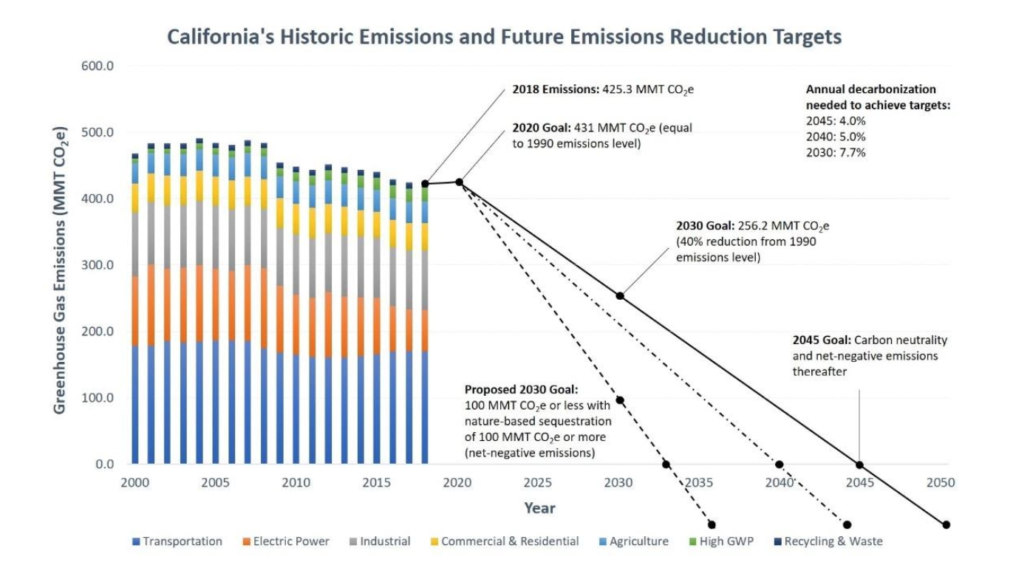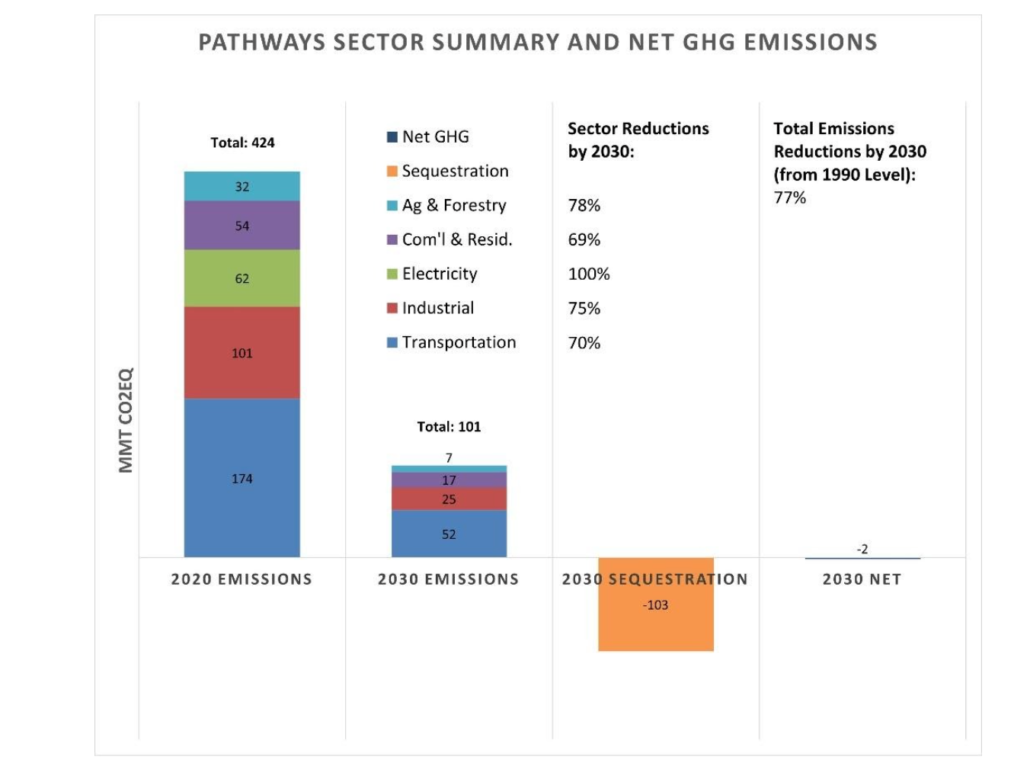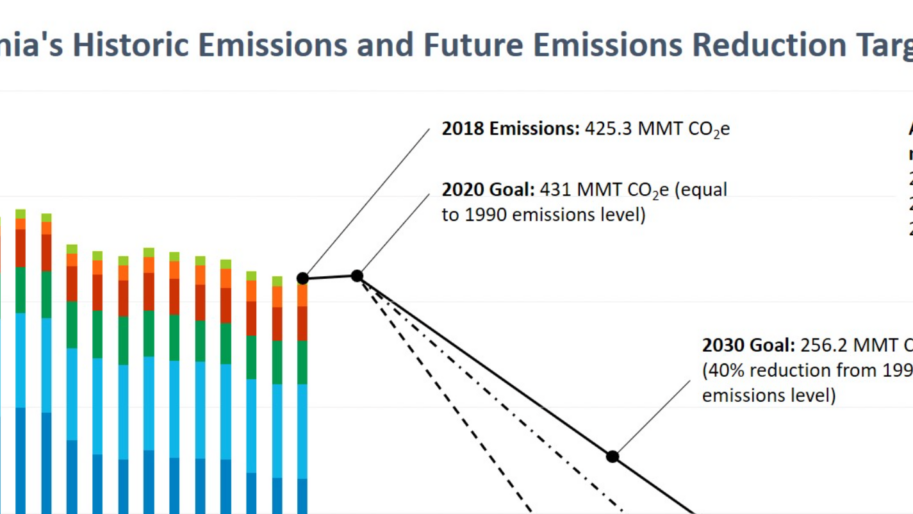The Climate Center’s Climate-Safe California (CSC) campaign advocates for a set of climate targets that, if implemented, would be the most ambitious targets set by any government in the world. At first hearing, that might sound radical. But listening to the mandates of the latest climate science is anything but radical.
As we work towards our goals by advancing legislation and building a broad coalition of supportive partners, we sought to add specificity to our targets. If we plan to reach net-negative emissions (where we’re removing more carbon from the atmosphere than we’re putting into it) by 2030, what exactly does that require of us? What kinds of changes are needed in electricity, transportation, buildings, aviation, agriculture, and industry?
One way to answer these questions is to use a model to project different emissions scenarios out to 2030. We knew based on our work with the Carbon Cycle Institute that by 2030, California can sequester about 103 million metric tons (MMT) of CO2 annually in our natural and working lands. This means to reach net-negative emissions, we need to emit less than 103 MMT by 2030.
We contracted ECMC, a California-based consultancy, to develop a model we could manipulate to devise an emissions reduction pathway that gets California to net-negative by 2030.
Given that California’s current emissions are upwards of 400 MMT CO2e annually, reducing them to around 100 MMT in 10 years is a tall task. Globally, in 2020, emissions dropped around 7% due to the coronavirus pandemic. But our calculations show that we need an even bigger decrease – almost 8% – to be sustained every year between 2020 and 2030 to reach our target (Figure 1). This is complicated by the fact that California’s 2020 wildfires emitted 110 MMT CO2, according to CARB’s latest estimate. In addition, global emissions are surging as economies reopen following the pandemic.

The value of modeling our net-negative 2030 scenario is that it illuminates the specific mitigation needs for each sector. Prior to our modeling project, we knew that the scale of needed emissions reductions was enormous – but now we now exactly how enormous on a sector-by-sector basis (Figure 2). Our understanding of the CSC emissions pathway became more concrete as we tinkered with the model.

We found that an essential component of our model scenario is to reach 100% renewable energy as quickly as possible. This not only zeroes out emissions from the electricity sector, but also benefits other sectors. Since we must scale up the electrification of buildings and vehicles, it is essential that this growth in electricity demand is met by clean, not dirty, energy sources.
California also needs to reduce total vehicle miles travelled by 30%. This entails much greater investment in public transit along with novel models for getting around, like ride-sharing in electric and autonomous vehicles. California should also match or exceed Washington’s recent legislative commitment to phase out the sale of gas-powered cars in the state by 2030. California must double-down on energy efficiency in buildings and industry, reduce off-road vehicle emissions, and capture methane from landfills and livestock manure.
The task ahead of us is nothing short of monumental. Meeting these goals requires a wartime-like mobilization of resources and a comprehensive suite of coordinated climate policies.
Still, in comparison to the consequences of failing to act, a dramatic emissions reductions effort is the only viable path forward. Recent climate science shows that we’re experiencing certain impacts of warming, like severe and frequent wildfires, up to 30 years sooner than previously expected. A 1.5C warmer world is not one human civilization adapted to thrive in – let alone 2C or hotter.
By using a model to project a net-negative 2030 emissions pathway, we added valuable detail to our vision of a climate-safe world. Most importantly, the model is available for anyone to download and use. It is available here. We encourage readers to play with the model and devise their own 2030 emissions scenarios. This can spark insight and dialogue around the critical collective task that we face. Together we can meet our goals – and we need to.


